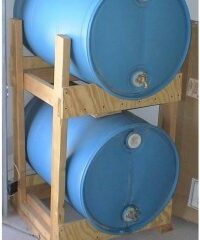Permission to Be Lazy With Your Water Storage—Sort of
 Last night I attended a fascinating medical lecture. The speaker certainly knew his stuff on how to use nutrition and oxygen and plant botanicals to heal the human body. You could tell that he wasn’t some newcomer to the scene of health and science. His 15 years of lecturing came through beautifully. I certainly know that my health will be better for having attended. He also did an amazing job in better illustrating for me about the ills of canola oil and other vegetable oils, synthetics in our food, etc. Anyway, for some reason he was asked a question from the audience about water storage. What the audience member thought that had to do with his topic was beyond me, but he went ahead and took time to give her his opinion about water storage—the only problem was he was just a tad off.
Last night I attended a fascinating medical lecture. The speaker certainly knew his stuff on how to use nutrition and oxygen and plant botanicals to heal the human body. You could tell that he wasn’t some newcomer to the scene of health and science. His 15 years of lecturing came through beautifully. I certainly know that my health will be better for having attended. He also did an amazing job in better illustrating for me about the ills of canola oil and other vegetable oils, synthetics in our food, etc. Anyway, for some reason he was asked a question from the audience about water storage. What the audience member thought that had to do with his topic was beyond me, but he went ahead and took time to give her his opinion about water storage—the only problem was he was just a tad off.

